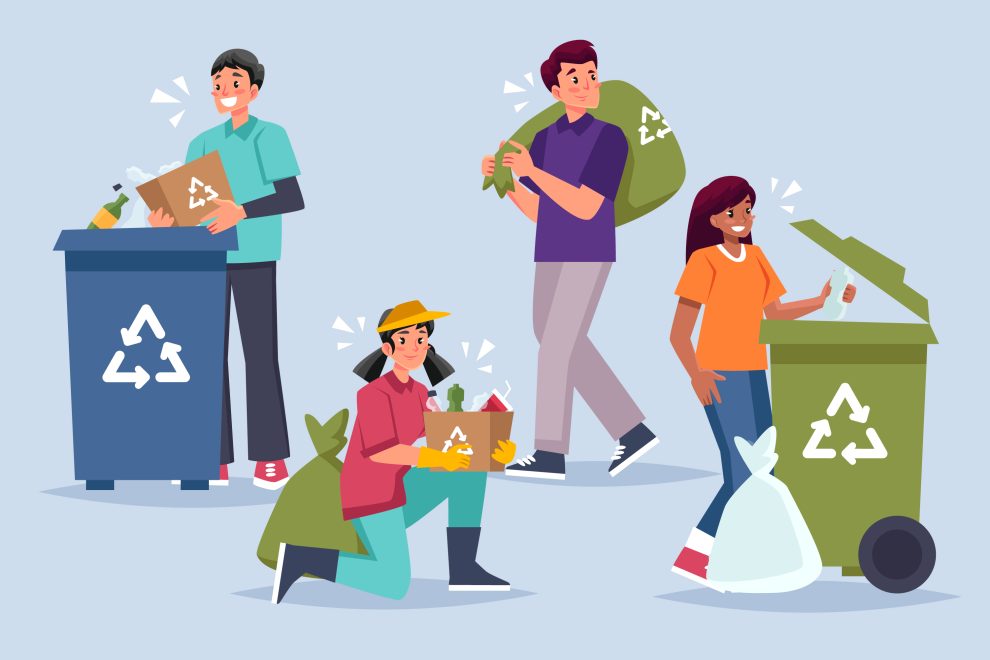What is Solid Waste Management and Disposal?
Solid waste is any waste produced by human or animal activity that is discarded as undesired and pointless. It is typically produced by commercial, residential, and industrial activity in a certain region and can be treated in a number of different ways. Garbage can be divided into categories based on the materials it is made of, including paper, plastic, glass, metal, and organic waste. To achieve environmental best practises, solid waste management must be organised. Environmental planning must take solid waste management and disposal into account as a crucial component of environmental hygiene.
Planning, administration, financial, engineering, and legal duties are all a part of managing and disposing of solid waste. Usually, the generator is responsible for doing so under the supervision of local, national, and even international authorities.
Introduction:
The management of solid waste disposal is typically used to describe the procedure for gathering and handling solid wastes. It offers ways to recycle things that don’t belong in the trash or rubbish. It is possible to define solid waste management as the process of transforming waste into a useful resource.
Municipal solid waste that is disposed of improperly can lead to unsanitary circumstances that can pollute the environment. Rodents and insects can transmit diseases. The management of solid waste presents difficult technical hurdles. They may also provide a wide range of administrative, social, and economic issues that need to be addressed.
Techniques for the Management and Disposal of Solid Waste:
The techniques for managing and disposing of solid waste are as follows:
1) Open Burning of Solid Waste
2) Process of sea dumping
3) Sanitary landfills for solid waste
4) The incineration process
5. The composting procedure
6) Landfilling through plow-in disposal
7) Pig feeding for disposal
8) Salvaging techniques
9) Biochemical digestion and fermentation
1. Open Burning of Solid Waste
In the current situation, open burning of solid waste is not the best option.
2. The Process of Sea Dumping
Only coastal cities are capable of carrying out this sea dumping technique. This process is not only expensive, but also harmful to the environment.
3. Disposal of garbage in clean landfills.
The process of placing solid waste in sanitary landfills is easy, tidy, and efficient. In this process, the layers are levelled, compacted, and covered with dirt after being squeezed with some mechanical equipment. Microorganisms operate on the organic debris and breakdown it in a 3 to 5 m deep trench.
Refuse depth in this operation is often restricted to 2 metres. Complex organic matter is hydrolyzed by facultative bacteria into simpler water soluble organics.
4. The use of incinerators
Combustible waste is suited for incineration. This technique involves expensive construction and operation expenditures. In densely populated areas without landfills, this strategy would be appropriate.
It can be used to lower the amount of solid waste that needs to be dumped.
5. Composting procedure
Composting is a common practise in developing nations and is comparable to hygienic landfilling. This process separates and composts organic material that can decompose. Yields are reliable final products that improve soil quality. They can serve as the building block for fertilisers.
In this approach, two techniques have been employed:
a) Composting in an open window
Composting using machinery
6. Destroying by ploughing the fields
Plowing waste into fields is not a frequent method of disposal. In general, these disposal methods are not environmentally friendly.
7. Hog feeding as disposal
In India, hog feeding is not a common method of disposal. The amount of waste dumped into sewers, including BOD and TSS, rises by 20 to 30 percent. Refuse is thoroughly ground in grinders before being poured into sewers.
8. Salvaging techniques
You can salvage, recycle, and reuse materials like metal, paper, glass, rags, some types of plastic, and so on.
9. Biochemical digestion and fermentation
Compost is made from biodegradable trash, and recycling is an option when it is practical. Suitable methods can be used to dispose of hazardous trash.
Conclusion:
Solid waste management in Malaysia is a process that every community must undertake to protect public health and the environment. It’s an essential service that helps keep our streets, waterways, and land clean and safe. The technique for disposal of solid waste can vary depending on your location, but it’s important to select a method that will safely manage the waste in your area. If you need help getting started with solid waste management in your community, contact Gargeon who are the leading cloud-based waste management company. They provide comprehensive services nationwide that will ensure your community is compliant with all environmental regulations.
Last but not least, if you found this article was useful, kindly forward to your friends who might finding this interesting. Explore other articles also at Post Puff ! Thanks for reading, ciao !












Add Comment